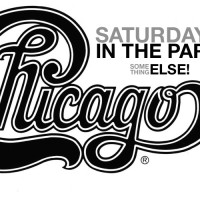Pianist Benny Green’s aptly titled new release Source can come off as a familiar conversation, since it’s filled with a number of jazz music’s notable voices — most of them, no surprise, key influences on his work.
So, yeah, you’ll find Bud Powell, Duke Pearson, Horace Silver and Sonny Clark here. That kind of straight-ahead bebop piano playing, after all, has been Green’s specialty since coming up as a sideman with Betty Carter. No surprises, then, right?
Not so fast. Skip over then to when Green, who appears throughout with bassist Peter Washington and drummer Kenny Washington, takes on tunes written by non-pianists — songs like Dizzy Gillespie’s “I Waited For You” (given a sensitive reading as a ballad) and Benny Golson’s “Park Avenue Petite.” There is even a curveball in the form of Mel Torme’s “Born to be Blue.” (Note: “Way ’Cross Town” was written by California-based pianist Carl Perkins, not the rockabilly rascal.) Green’s playing seems to open up into new vistas, perhaps because it’s been so long since we’ve heard him in a trio setting — a span that stretches back to 2000’s Naturally, with Russell Malone and Christian McBride. Maybe because it moves Green so far away from his comfort zone at the keyboard.
The most engrossing track might just be a crisp, attacking take on Donald Byrd’s “Little T.” Green still finds space to swing, even as the trio underscores Byrd’s sometimes-forgotten role in carrying bebop past early heroics by Gillespie and Bird. Green’s almost like a next-gen Mike McKenna. Speaking of that, Green, in the liner notes, has some biting commentary on the state of jazz today. In keeping, while the track listing on Source seems to betray a ruminative mood, since it focuses on the music’s storied history for inspiration, the trio’s performance is something else entirely — a crackling counterpoint.
Green flits and flies, making run after run over Kenny Washington’s understated drum fills on “Little T,” a composition which first found wide notice on Lee Morgan’s Indeed! from 1956. Peter Washington is a revelation, this nimble, sweetly swaying wonder at the bass. You can sense a symbiosis created by a recent tour playing as the rhythm section behind guitarist Satoshi Inoue. (Peter also appeared on Green’s solo debut, 1988’s Prelude; while Kenny played on Green’s The Place To Be back in 1996.)
Together, Green and Co. make a definitive argument for the dog-eared classic jazz playbook. Yet, they are not trying to arm-twist you into appreciating these older songs, not playing the role of schoolmarm, so much as deftly drawing you in. Source, even as it pays loving tribute to these tracks, underscores why they continue to serve as inspirational wellsprings.
[amazon_enhanced asin=”B004WQW1X2″ price=”All” background_color=”FFFFFF” link_color=”000000″ text_color=”0000FF” /] [amazon_enhanced asin=”B002C7489S” price=”All” background_color=”FFFFFF” link_color=”000000″ text_color=”0000FF” /] [amazon_enhanced asin=”B00007KMO1″ price=”All” background_color=”FFFFFF” link_color=”000000″ text_color=”0000FF” /] [amazon_enhanced asin=”B004WQW1ZU” price=”All” background_color=”FFFFFF” link_color=”000000″ text_color=”0000FF” /] [amazon_enhanced asin=”B000002V06″ price=”All” background_color=”FFFFFF” link_color=”000000″ text_color=”0000FF” /]
- Nick DeRiso’s Best of 2015 (Rock + Pop): Death Cab for Cutie, Joe Jackson, Toto + Others - January 18, 2016
- Nick DeRiso’s Best of 2015 (Blues, Jazz + R&B): Boz Scaggs, Gavin Harrison, Alabama Shakes - January 10, 2016
- Nick DeRiso’s Best of 2015 (Reissues + Live): John Oates, Led Zeppelin, Yes, Faces + others - January 7, 2016



